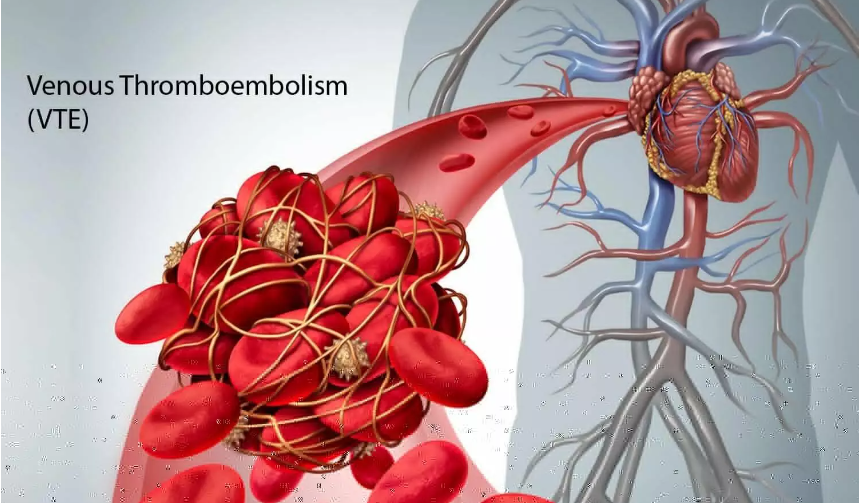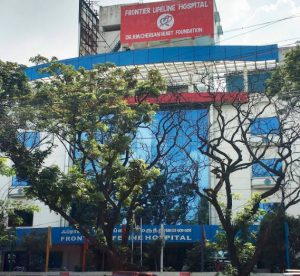Venous ThromboEmbolism (VTE) – DVT or PE
Venous thromboembolism, VTE, refers to blood clots that begin in a vein. Across the globe, it is a leading cause of death and disability, and it’s the third leading vascular diagnosis after a heart attack and stroke. Read More
Top Doctors For Venous ThromboEmbolism (VTE) – DVT or PE Treatments
Top Hospitals For Venous ThromboEmbolism (VTE) – DVT or PE Treatments
Venous ThromboEmbolism (VTE) – DVT or PE
What is Venous Thromboembolism?
Venous Thromboembolism VTE is an umbrella term that includes two conditions: Deep vein thrombosis (DVT) and pulmonary embolism (PE).
DVT refers to a blood clot that forms in a deep vein within the body. This is most common in the lower leg and thigh, but it can also occur in other body parts.
Venous thromboembolism, VTE, refers to blood clots that begin in a vein. Across the globe, it is a leading cause of death and disability, and it’s the third leading vascular diagnosis after a heart attack and stroke.

What are the forms of venous thromboembolism?
Venous thromboembolism is of two types;
- Deep Vein Thrombosis (DVT): Venous thromboembolism is referred to as deep vein thrombosis when the blood clot forms in a deep vein; in the lower leg, thigh, pelvis, and sometimes in the arm. Sometimes prolonged sitting or lying down can cause deep vein thrombosis. Deep Vein Thrombosis can cause serious illness or, in a few cases, even death if left untreated.
- Pulmonary Embolism (PE): Venous thromboembolism is referred to as pulmonary embolism when a deep vein thrombosis clot breaks from a vein wall, travels through the bloodstream to the lungs, and blocks some or all of the blood supply and damage the blood vessels in the lungs. This can lead to breathing difficulty, rapid heart rate, chest pain, dizziness, and may even lead to unconsciousness.
Pulmonary embolism is more severe than deep vein thrombosis and can, in fact, be a life-threatening emergency.
Causes
What are the most common causes of VTE?
General venous thromboembolism can be a complication of surgery. It can also be triggered by cancer, immobilization, and hospitalization.
Genetic causes of excessive blood clots could also be a causative factor. This is due to changes in the genetic code of some proteins required for clotting or proteins responsible for dissolving blood clots in the body.
Specifically, deep vein thrombosis can occur due to the following;
- As a result of slow or changes to the pattern of blood flow.
- In women, pregnancy or the use of hormones, like oral contraceptives or estrogen, can be a causative agent.
- Damages to blood vessel lining.
- Changes to blood component which leads to easy blood clots formation.
- Trauma.
- Inflammation; is in response to an infection or an injury.
Symptoms
What are the most common symptoms associated with VTE?
According to the Center for Disease Control and Prevention (CDC), about half of people with deep vein thrombosis are asymptomatic. That is, they do not have any symptoms. However, any symptoms that do occur will be at the site of clot formation. These include;
- Redness or noticeable discoloration of the skin.
- Warmth or aching of the skin area of clot formation.
- Pain at, or tenderness of, the area of clot formation.
- Swelling of the area of clot formation.
Pulmonary embolism symptoms
Pulmonary embolism can occur without any of the symptoms of deep vein thrombosis. Specific pulmonary embolism symptoms include;
- Breathing difficulty; such as fast breathing or unexplained shortness of breath
- Heartbeat faster than normal or irregular.
- Pain or discomfort in the chest area worsens with deep breaths or coughing.
- Coughing up blood.
- Very low blood pressure, light-headedness, dizziness, or passing out.
- Shortness of breath
DVT symptoms (usually affects only one leg at a time):
- Swelling of the leg
- Pain or tenderness in the leg, often similar to the symptoms of a muscle cramp (or injury) that does not resolve
- Increased warmth in the area
- Red or discolored skin
What are the Diagnostic steps for venous thromboembolism?
To diagnose venous thromboembolism, the doctor will examine the patient and ask about their health history and family history. The patient will have to undergo blood tests to check for clotting activity, and the patient may need an imaging test, such as an ultrasound of the leg for DVT or computed tomography (CT) scan of the lungs for PE.
Venous thromboembolism can be diagnosed with the following investigations
- Review of medical history.
- Physical examination.
- Imaging tests, such as X-ray, ultrasound, computed tomography (CT) scan, pulmonary angiography, electrocardiography, venography, and ventilation/perfusion (V/Q)scan. These are carried out to examine and assess the internal organs, such as the lungs.
- Blood tests, such D-dimer test.
- Duplex ultrasound
- Arterial Blood Gas
- Pulse Oximetry
Venous thromboembolism treatment:
Both DVT and PE are serious conditions that can damage the lungs and other organs. They need medical treatment on an emergency basis.
- Compression stockings, or graduated compression stockings as it is also known, prevent deep vein thrombosis and relieve pain and swelling.
- Thrombolytic; to quickly dissolve clots. Usually used to treat pulmonary embolism.
- Anticoagulants (blood thinners); to prevent further clot formation. They include heparin, low molecular weight heparin, apixaban, edoxaban, rivaroxaban, and warfarin (coumarin).
- Direct oral anticoagulants (DOACs); are newer drugs that eliminate the need for a routine blood test for monitoring.
- Thrombin inhibitors; interfere with the process of clot formation and bring it to a halt.
Surgery: in severe and life-threatening cases, clots are surgically removed. Thrombectomy, embolectomy, IVC filter, and ligation.
FAQ
How can venous thromboembolism (VTE) be prevented?
The following tips can help prevent venous thromboembolism.
- After being confined to bed for a long time, for instance, after surgery, illness, or injury, move around as soon as possible.
- If the need arises to sit for a long time, like when traveling for over 4 to 5 hours, try to get up and walk around every 2 to 3 hours, and exercise the legs by raising and lowering the heels while the toes remain on the floor, and wear loose-fitting clothes.
- Maintain a healthy weight.
- Avoid a sedentary lifestyle.
- Quit smoking.
What are the risk factors for venous thromboembolism?
Risk factors for venous thromboembolism include;
- Vein injury which could be a result of fractures, severe muscle injury, or major surgery.
- Slow blood flow.
- Increase in estrogen level.
- Certain chronic medical illnesses, like heart disease, lung disease, and inflammatory bowel disease (such as Crohn’s disease or ulcerative colitis).
- Family history of DVT or PE.
- Age; as age increases, so does the risk of venous thromboembolism.
- Obesity.
- Inherited clotting disorders.
- Thicker than normal blood due to overproduction of blood cells by the bone marrow.
What are the complications of venous thromboembolism?
Possible complications of venous thromboembolism include;
- Post-thrombotic syndrome (PTS): characterized by poor blood flow, inflammation, and damage to blood vessels due to deep vein thrombosis. It causes swelling, discomfort, pain, itchiness, or discoloration in the affected part, alongside cramping or fatigue. In severe cases, skin sores may be seen.
- Pulmonary hypertension occurs due to pulmonary embolism blocking the blood flow and raising blood pressure in the vessels leading to the lungs. This can lead to heart failure, difficulty breathing, tiredness, palpitations, or fainting.
- Pulmonary embolism.
- Heparin-induced thrombocytopenia.
- Heparin-induced osteopenia.
- Skin necrosis
- Recurrence.
What are the risk factors associated with VTE?
The risk factors associated with VTE are:
- Injury to the vein caused by fractures and severe muscle injury, and the patient who underwent major abdomen, pelvis, hip, and legs surgeries.
- Slow blood flow caused by patients who are confined to bed, have limited movements, paralysis, and sitting for a long time.
- Increased estrogen levels caused by hormone replacement therapy and birth control pills.
- Chronic medical illnesses such as heart and lung diseases, cancer, and inflammatory bowel diseases.
- Smoking and alcohol consumption.
- Obesity










































